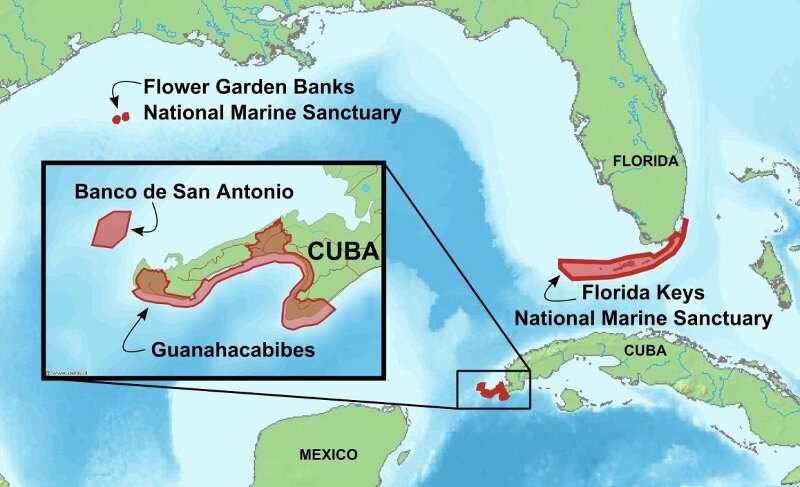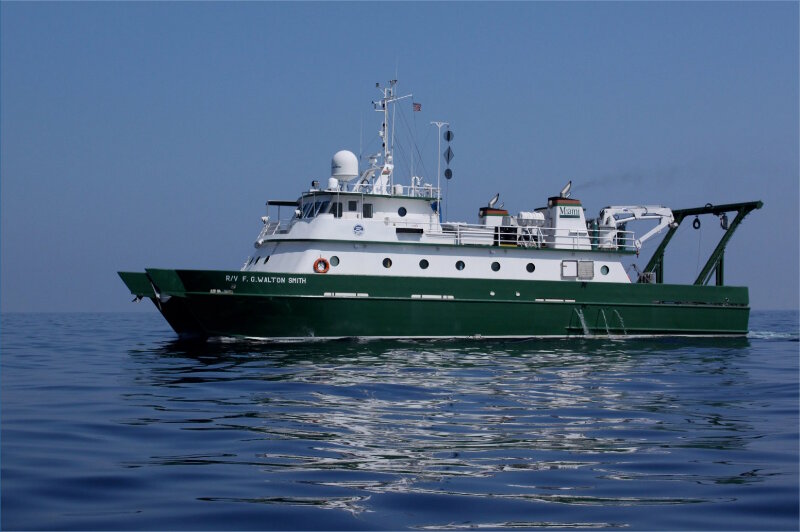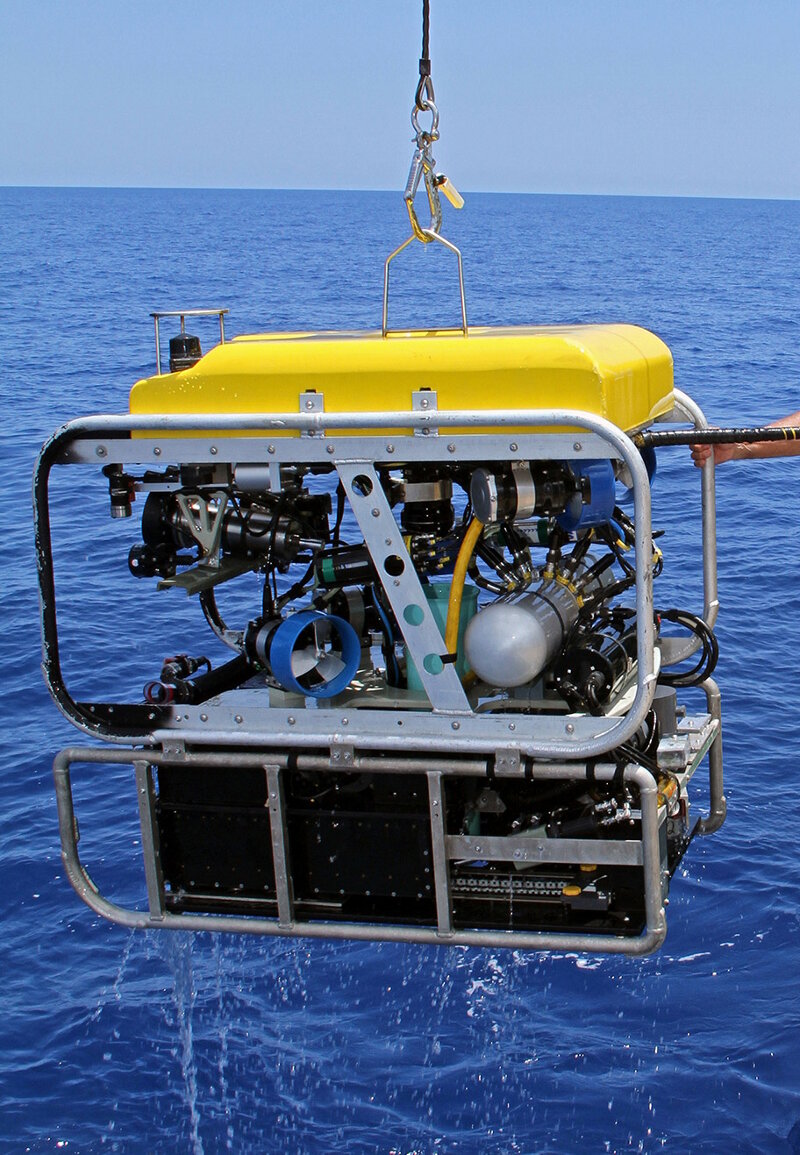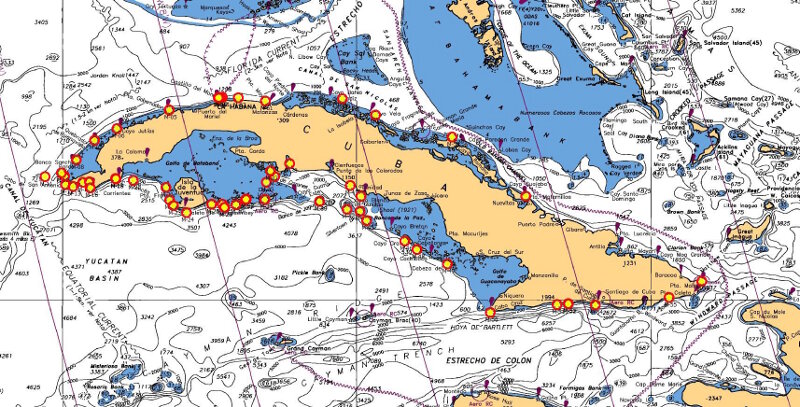
John Reed, Research Professor & Chief Scientist - Harbor Branch Oceanographic Institute at Florida Atlantic University
R/V F.G. Walton Smith & Mohawk ROV: May 15 - June 13, 2017

Figure 1. Sister-Sanctuary relationship between the marine sanctuaries Guanahacabibes and Banco de San Antonio in Cuba, and the Florida Keys National Marine Sanctuary and Flower Garden Banks National Marine Sanctuary in the United States, recognizing that these places are all inextricably linked through the flow of the ocean. Image courtesy of Cuba’s Twilight Zone Reefs and Their Regional Connectivity. Download larger version (jpg, 193 KB).
The purpose of our research expedition in collaboration with our Cuban scientific partners is to discover and characterize the extent of mesophotic reefs in Cuba and to compare the health and connectivity (physical, genetic, and ecological) among the mesophotic and shallow coral reef systems in Cuba and the United States. This cruise is in support of the Joint Statement between the United States of America and the Republic of Cuba on Cooperation on Environmental Protection (November 24, 2015) and the Memorandum of Understanding (MOU) between the United States National Oceanic and Atmospheric Administration (NOAA), the U.S. National Park Service, and Cuba’s National Center for Protected Areas.
The MOU establishes a “Sister-Sanctuary” relationship between the marine sanctuaries Guanahacabibes and Banco de San Antonio in Cuba and the marine sanctuaries in the United States, in particular, Florida Keys National Marine Sanctuary (FKNMS), Pulley Ridge Habitat Area of Particular Concern (PR HAPC), and Flower Garden Banks National Marine Sanctuary (FGBNMS). It is recongnized that these reef ecosystems are all inextricably linked through the flow of the ocean (Figure 1).

Figure 2. Research Vessel F.G. Walton Smith, Rosenstiel School of Marine Science and Atmospheric Science, University of Miami. This research vessel, named in honor of the school’s founder, is a 96-foot-long catamaran which accomodates 20 scientists and crew and has 800 square feet of lab space. Image courtesy of Cuba’s Twilight Zone Reefs and Their Regional Connectivity, University of Miami. Download larger version (jpg, 240 KB).

Figure 3. The SubAtlantic Mohawk 18 remotely operated vehicle (ROV), owned by the National Marine Sanctuary Foundation and the Flower Garden Banks and operated by the Undersea Vehicles Program at the University of North Carolina Wilmington (UVP/UNCW). Image courtesy of Cuba’s Twilight Zone Reefs and Their Regional Connectivity, Brian Cousin. Download larger version (jpg, 399 KB).
We will use the Research Vessel (R/V) F.G. Walton Smith (Figure 2), operated by the University of Miami, and the Mohawk Remotely Operated Vehicle (ROV) (Figure 3), owned by the National Marine Sanctuary Foundation and operated by University of North Carolina at Wilmington, Undersea Vehicle Program.
Our Cuban partners and collaborators include scientists from CNAP (Centro Nacional de Áreas Protegidas), CIM-UH (Centro de Investigaciones Marinas, Univ. de la Habana), ICIMAR (Instituto de Ciencias del Mar), and ANC (National Cuba Aquarium). For the U.S., this project will be organized by two NOAA Cooperative Institutes: the Cooperative Institute for Ocean Exploration, Research, and Technology (CIOERT) at Harbor Branch Oceanographic Institute, Florida Atlantic University (HBOI-FAU), and the Cooperative Institute for Marine and Atmospheric Studies (CIMAS) at the University of Miami. Marine biologists and oceanographers from HBOI-CIOERT and NOAA Fisheries (NOAA/NMFS/Southeast Fisheries Science Center) will participate on the cruise.
The cruise will circumnavigate Cuba over 30 days, with scientists conducting daily ROV dives to focus on mesophotic reef sites at depths of 30-150 meters. The specific objectives of this expedition are to:

Figure 4. Map of Cuba with proposed ROV dive sites on shelf-edge mesophotic reefs, deep shelf-slope, and seamounts (depths 30-200 meters). Image courtesy of Cuba’s Twilight Zone Reefs and Their Regional Connectivity. Download larger version (jpg, 623 KB).
We intend to share information ranging from scientific research outputs to education and outreach materials – all of which will help us better understand and manage some of the most ecologically significant marine habitats in both countries. Main themes for collaboration with our international institutions include: academic exchange, regional modeling of marine connectivity, mesophotic reef studies, and exchange of information and methodologies. This project could serve as the basis for a long-term relationship among U.S. and Cuban scientists and collaborators.